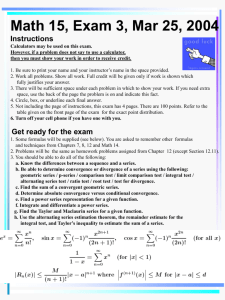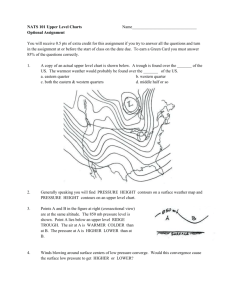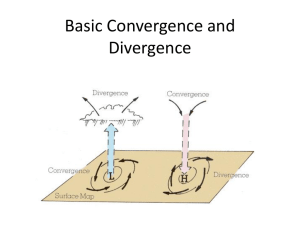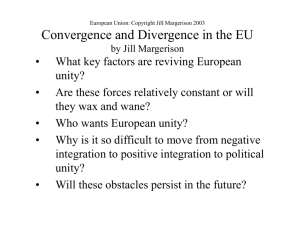Chapter Nine
advertisement
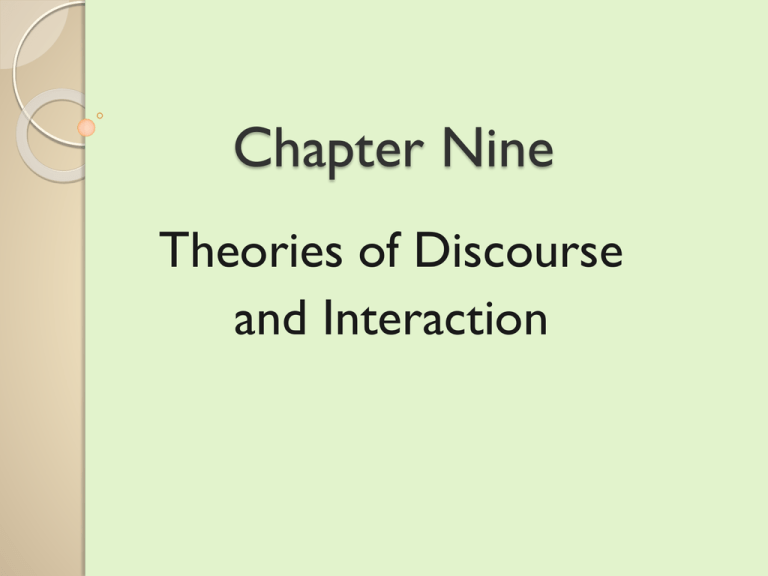
Chapter Nine Theories of Discourse and Interaction Foundations in the Study of Language Processes Semantics = “meaning” and the links between signs and referents Syntax = the rules (grammars) that govern the construction of utterances Pragmatics = the way language is used in social situations (interactional goals and consequences) Speech Act Theory Speech Act Theory developed by Austin and Searle Represents a pragmatic approach to language use Central tenet: individuals perform actions with the words they speak Levels of Speech Acts Utterance level: the mere stringing together of words Propositional level: content of the statement Illocutionary level: intended effect of statement (it’s cold in here) Perlocutionary level: received effect on listener (closes the window or says, “I don’t think it’s cold) Types of Speech Acts Most commonly used category scheme for speech acts: assertives, directives, commissives, expressives, and declaratives (p. 147) Indirect speech acts: conventionalized forms (e.g., “can you reach the salt”) We make sense of speech acts through application of felicity conditions—most significant for declaratives Applications Speech Act Theory has been used to describe sequencing of utterances in conversation and coherence of those sequences Metts add: Has been useful for analyzing couples’ talk and how relational messages are construed. Ex. I love you. (expressive) I love you. Thanks. or No you don’t. We I like you too. have only been dating a month. Critiques Speech Act Theory has been criticized in terms of feasibility in ongoing interaction— we construe meaning beyond the level of a single turn Metts add: Categories are broad. Expressives for example are strong and weak as in example of expressing love or I hate you vs I am upset with you. Grice’s Cooperative Principle (not in chapter) See handout for information about implicature. Grice’s theory fills in much of the meaning we construct from conversation that cannot be explained by speech act theory. Implicature is a compliment for speech acts Consider deception for example. Strength of theory is its scope—every language uses implicature and it helps explain intercultural comm. problems. Coordinated Management Of Meaning Theory Coordinated Management of Meaning Theory developed in communication discipline by Cronen and Pearce CMM follows a social constructionist ontology and an interpretive or even critical epistemology Management Rules in Interaction CMM sees interaction as rule-guided activity Constitutive rules: specify what behaviors “count for” in interaction (what behaviors constitute a “date”?) Regulative rules: specify sequences of behavior for particular situations (what is the sequence of behaviors on a first date?) Meaning Systems of Social Reality CMM proposes that rules are interpreted within a hierarchy of meaning (Figure 9.1, p. 151) It includes six levels of interpretation: content level, speech act level, episode level, relationship level, life script level, and cultural patterns level Ex: “Would you stop that?!” Culture Life script/self-concept Relationship Episode Speech Act Text Coordination Processes Coordination in interaction refers to the “meshing of actions” not the perfect sharing of interpretations Interactions that are not well coordinated (e.g., double binds and paradoxes) indicate differences in rule usage and in levels of interpretation Ex. Be spontaneous. (episode vs relational level of interpretation) Communication Accommodation Theory CAT was developed by Giles and his colleagues CAT considers the ways in which people accommodate (or attune) to others during interaction through processes of convergence, divergence, and maintenance Three Forms of Accommodation Convergence: Attempts to become more like interaction partner in speech, dress, other nonverbal cues Divergence: Efforts to accentuate communicative differences Maintenance: Individual’s communication patterns remain stable Dimensions of Convergence & Divergence Convergence/divergence can be: ◦ upward or downward ◦ varied in degree (full, partial, hyper) ◦ unimodal or multimodal ◦ symmetrical or asymmetrical ◦ objective, psychological, or perceptual Babytalk with elderly is psychological (converging to stereotype) and asymmetrical Explanations for Accommodation Convergence in interaction is often attributed to need for social approval (similarity leads to attraction), especially with status/powerful others Divergence in interaction is often attributed to desire to establish and emphasize distinct social/cultural identity in interaction Both convergence and divergence will be influenced by situation Three Main Accommodation Approaches Convergence Divergence Maintenance http://www.youtube.com/watch?v=1REumzRlncM&feature=related Research: Results & Implications (Booth-Butterfield & Jordan, 1989) Results: Behaviors by Race & Group Composition Homogenous Heterogeneous Black White Black White Smiling 46.7 25.78 28.7 47.33 Adaptors 6.6 9.89 5.3 9.11 Interrupt 5.4 1.78 2.3 1.55 Expressive 11.86 8.86 10.43 9.22 Luster 19 Consequences of Accommodation Consequences will depend on perceived motive of the interactant There are optimal levels of accommodation, and it is possible to “hypercorrect” in interaction Consequences will depend on interpretations of receivers (some elders find baby talk comforting) Expectancy Violation Theory Expectancy Violation Theory developed by Judee Burgoon and her colleagues Began as a theory of nonverbal behavior but has been expanded to other forms of interaction EVT considers expectations about interaction and reactions if those expectations are violated Expectancies in Interaction A central tenet of EVT is that we have expectations (expectancies) about verbal and nonverbal behavior during interaction Based on both cultural norms and individual relationships We are often unaware of our expectancies until they have been violated Violations of Expectations When an expectation is violated, we feel arousal Arousal is a physiological effect Arousal spurs an “orienting” reaction so we look to find causes of arousal When the cause is unexpected behavior by others, we process it. Impact of Violations The impact of the violation will depend on two factors (1) If the behavior (valence) is positive, the violation will have positive effects (2) If the (communicator) reward valence of the other person is positive, the violation will also be seen in a positive manner Extension of EVT: Interaction Adaptation Theory Burgoon and colleagues are extending ideas from EVT into more broadly-based “Interaction Adaptation Theory” IAT proposes that behavior is guided by Required, Expected, and Desired elements. These elements are then compared to actual behavior in interaction


